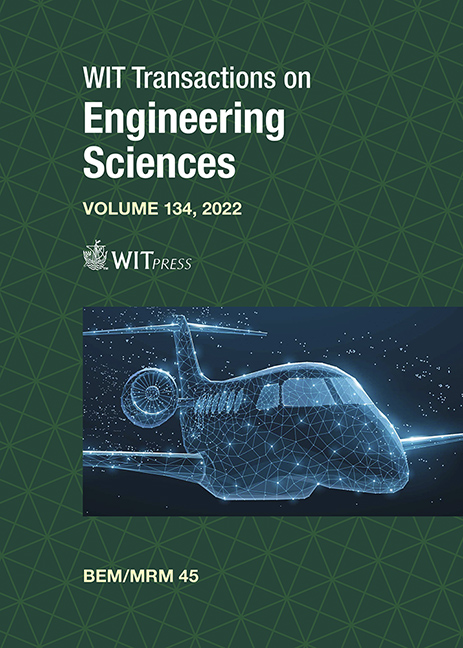SINGULAR AND HYPERSINGULAR INTEGRAL EQUATIONS IN FLUID–STRUCTURE INTERACTION ANALYSIS
Price
Free (open access)
Transaction
Volume
134
Pages
13
Page Range
67 - 79
Published
2022
Paper DOI
10.2495/BE450061
Copyright
Author(s)
VASYL I. GNITKO, ARTEM O. KARAIEV, KYRYL G. DEGTYARIOV, IVAN A. VIERUSHKIN, ELENA A. STRELNIKOVA
Abstract
The paper presents new computational techniques based on coupled boundary and finite element methods to study fluid–structure interaction problems. Thin shells and plates are considered as structure elements interacting with an ideal and incompressible liquid. To describe the motion of both structural elements and the fluid, the basic relations of the continuous mechanics are incorporated. The liquid pressure is determined by applying the Laplace equation. Two kinds of boundary value problems are considered corresponding to one-sided and two-sided contact of structural elements with the liquid. Integral equations for numerical simulation of pressure are obtained. For a two-sided contact of the structural element with the liquid, hypersingular integral equations are received, whereas singular integral equations with logarithmic singularities describe the problems of one-sided contact. Considering the structure axial symmetry, the integral equations are reduced to one-dimensional ones. The finite element method for determining modes and frequencies of the elastic structure coupled with boundary element method for the hypersingular integral equation is implemented to find the fluid pressure on the structure element with two-sided contact with the liquid. The liquid pressure evaluation in axisymmetric problems is reduced to one-dimensional integral equations with kernels in the form of elliptic integrals. The effective technique is developed for numerical simulation of obtained singular integrals. The same technique is extended to hypersingular integral equations. The frequencies and modes of structure vibrations taking into account the added masses of the liquid are obtained. Thin circular plates and shells of revolution are considered as structure elements in numerical simulations. The accuracy and reliability of the proposed method are ascertained.
Keywords
fluid–structure interaction, boundary and finite element methods, singular and hypersingular integral equations, free vibrations, fluid-filled elastic shells





